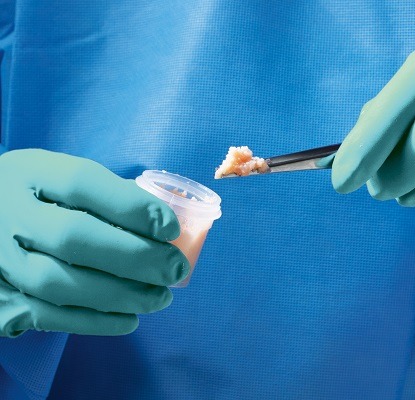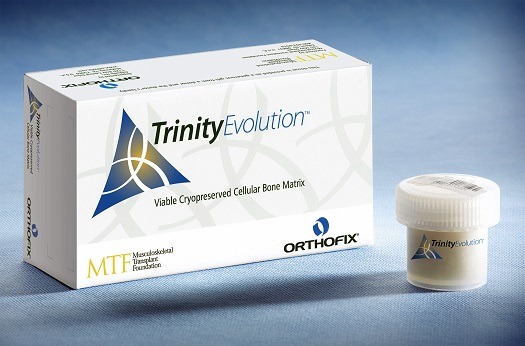
A paper published in the European Journal of Spine has demonstrated the effectiveness of Orthofix’s Trinity Evolution bone graft for single-level anterior cervical discectomy and fusion in combination with a PEEK interbody spacer and supplemental anterior fixation.
The 12-month study found 78.6% fusion rates at six months, and 93.5% at 12 months. Seventy-five percent of the study participants were current or former smokers, diabetic, overweight, obese or extremely obese and considered to be at high risk for bone growth failure.
“To alleviate pain and neurological deficits resulting from nerve compression caused by degenerative disc disease, the most common recourse is surgical decompression through an anterior approach followed by the insertion of a structural interbody spacer filled with bone graft material,” says Timothy A Peppers, at Scripps Hospital (La Jolla, USA) and a co-author of the journal article. “This study demonstrated the effectiveness of Trinity Evolution in achieving a solid fusion when used in this manner, indicating that it is a viable option for patients needing anterior cervical discectomy and fusion.”
from nerve compression caused by degenerative disc disease, the most common recourse is surgical decompression through an anterior approach followed by the insertion of a structural interbody spacer filled with bone graft material,” says Timothy A Peppers, at Scripps Hospital (La Jolla, USA) and a co-author of the journal article. “This study demonstrated the effectiveness of Trinity Evolution in achieving a solid fusion when used in this manner, indicating that it is a viable option for patients needing anterior cervical discectomy and fusion.”
This prospective, multicentre, clinical study was designed to evaluate the effectiveness of the viable cellular bone allograft in patients undergoing a single level fusion at the vertebral locations between C3/C4 and C6/C7. Trinity Evolution was placed within and around each Orthofix PEEK interbody spacer to promote bone growth.
The primary endpoint was radiographic fusion status based on independent review of computed tomography (CT) scans and radiographic review of angular motion. The criteria for fusion was the presence of bridging bone across the adjacent endplates as seen on thin cut CT scans in addition to angular motion from flexion/extension X-rays.
In addition, secondary endpoints were measured including function as assessed by the Neck Disability Index and neck and arm pain as assessed by individual Visual Analog Scales. Neck function and neck/arm pain were found to significantly improve at both six and 12 months. There were no serious adverse events attributable to Trinity Evolution as determined by an independent consultant.
Processed by the Musculoskeletal Transplant Foundation (MTF), a nonprofit organisation, the bone graft is a cryopreserved allograft consisting of cancellous bone with viable cells retained within that matrix and a demineralised cortical bone component. It possesses all three of the key properties for successful bone grafting, which makes it an ideal autograft substitute.
Bruce Stroever, president and chief executive officer of MTF, says, “We are pleased these results support the use of a high quality MTF allograft like Trinity Evolution to augment the patients’ recovery.”
Trinity Evolution is the predecessor of Trinity Elite, a mouldable bone graft material designed to enable physicians to control the placement of tissue easily during procedures. To date there have been more than 150,000 procedures using Trinity Evolution and Trinity ELITE.













